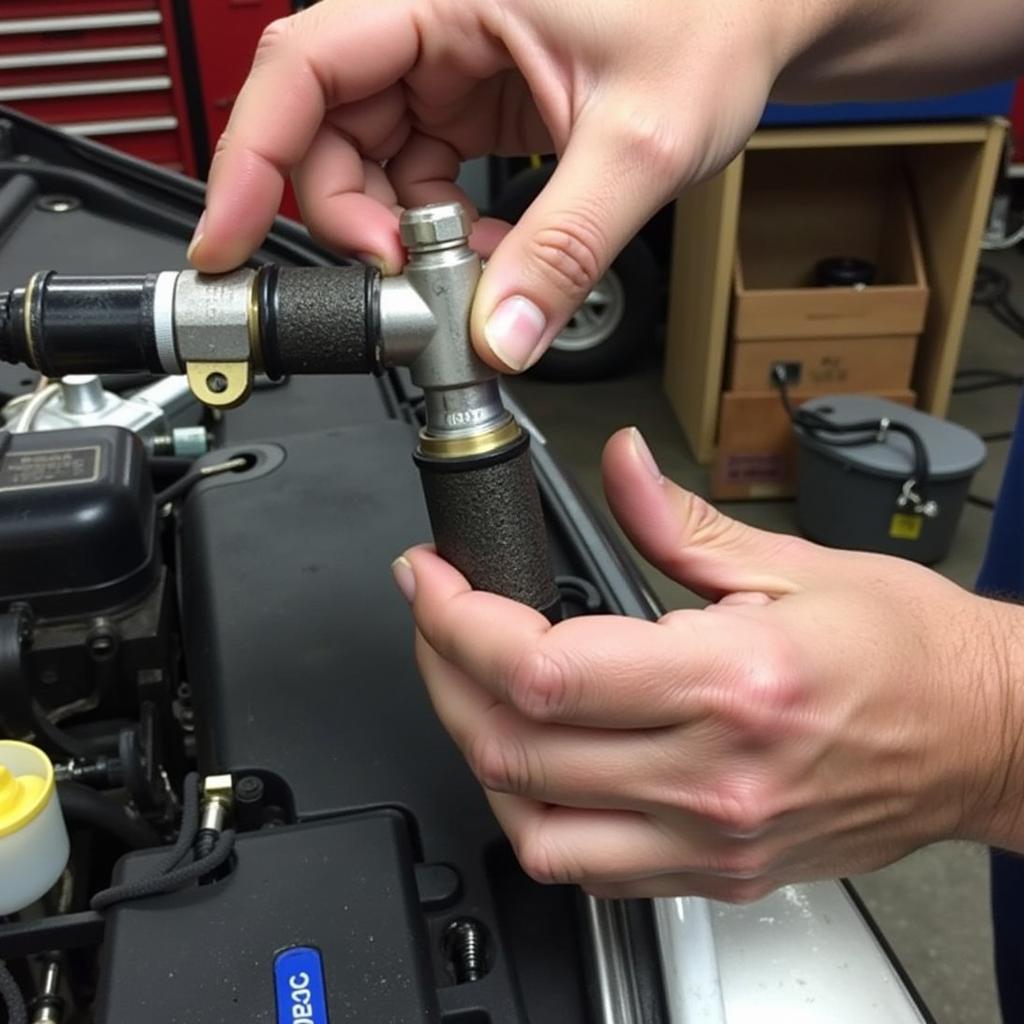Car Emission Problem Troubleshooting can be a daunting task, whether you’re a car owner, a mechanic, or an automotive technician. Understanding the complexities of your vehicle’s emissions system and identifying the root cause of a problem requires knowledge, patience, and the right approach. This guide offers practical advice and step-by-step instructions to help you diagnose and fix those pesky emission issues.
emissions problems in cars are often indicated by warning lights on your dashboard, decreased fuel efficiency, or a noticeable change in your engine’s performance. However, pinpointing the exact culprit requires a more systematic approach.
Understanding Your Car’s Emission System
The emission system in your car is responsible for minimizing the release of harmful pollutants into the atmosphere. It’s a complex network of components working together, including the catalytic converter, oxygen sensors, exhaust gas recirculation (EGR) valve, and evaporative emissions control system. A problem in any of these areas can trigger car emission problems.
Common Causes of Car Emission Problems
Several issues can contribute to car emission problems. These can range from simple fixes like a loose gas cap to more complex problems requiring professional attention. Some of the most common causes include:
- Faulty Oxygen Sensors: These sensors monitor the oxygen levels in your exhaust and play a crucial role in regulating the air-fuel mixture. A malfunctioning sensor can lead to increased emissions and reduced fuel economy.
- Damaged Catalytic Converter: The catalytic converter converts harmful gases into less harmful substances. A clogged or damaged converter can restrict exhaust flow and increase emissions.
- Malfunctioning EGR Valve: The EGR valve recirculates a portion of exhaust gases back into the engine to reduce combustion temperatures and NOx emissions. A faulty EGR valve can disrupt this process and lead to increased emissions.
- Evaporative Emission System Leaks: The evaporative emission system prevents fuel vapors from escaping into the atmosphere. Leaks in this system can contribute to increased hydrocarbon emissions.
- Spark Plug and Ignition System Problems: car spark plug cable problems and car spark plugs problems can also impact your emissions. Worn spark plugs or faulty ignition components can lead to incomplete combustion, increasing emissions.
Troubleshooting Car Emission Problems: A Step-by-Step Guide
-
Check the Check Engine Light: The first and most obvious sign of an emission problem is the check engine light. Get the diagnostic trouble codes (DTCs) read using an OBD-II scanner. This will give you a starting point for your troubleshooting.
-
Inspect the Gas Cap: A loose or damaged gas cap can trigger the check engine light and contribute to evaporative emissions. Ensure the cap is tight and undamaged.
-
Visually Inspect Components: Look for obvious signs of damage or wear in the exhaust system, including the catalytic converter, oxygen sensors, and EGR valve. Check for leaks, cracks, or discoloration.
-
Test the Oxygen Sensors: Using an OBD-II scanner, monitor the oxygen sensor readings. Fluctuating readings can indicate a healthy sensor, while stagnant or out-of-range readings suggest a problem.
-
Check the EGR Valve: Inspect the EGR valve for carbon buildup or blockage. You can also test the valve’s functionality using a vacuum pump.
 Checking the EGR Valve for Issues
Checking the EGR Valve for Issues
“Regular maintenance is key to preventing car emission problems. Simple things like changing your spark plugs and air filter on schedule can make a big difference,” says automotive expert, Michael Davis.
-
Inspect the Catalytic Converter: A clogged catalytic converter can often be diagnosed by tapping on it with a rubber mallet. A dull thud suggests a blockage, while a hollow sound indicates a healthy converter.
-
Check for Vacuum Leaks: Vacuum leaks can disrupt the air-fuel mixture and impact emissions. Use a vacuum gauge to test for leaks in the intake manifold and vacuum hoses.
“Don’t underestimate the impact of fuel quality on your car’s emissions. Using low-quality fuel can contribute to carbon buildup and other problems,” adds Emily Carter, a seasoned automotive engineer.
car gas line problems can sometimes manifest as emission problems, so it’s important to rule out any fuel delivery issues.
Conclusion
Car emission problem troubleshooting requires a systematic approach and a good understanding of your vehicle’s emissions system. By following the steps outlined in this guide, you can effectively diagnose and address many common emission issues. Remember, regular maintenance is crucial for preventing these problems in the first place. For further assistance, connect with AutoTipPro at +1 (641) 206-8880 or visit our office at 500 N St Mary’s St, San Antonio, TX 78205, United States. We’re here to help you keep your car running clean and efficiently. problem with cars fact sheet provides additional helpful resources.




Leave a Reply